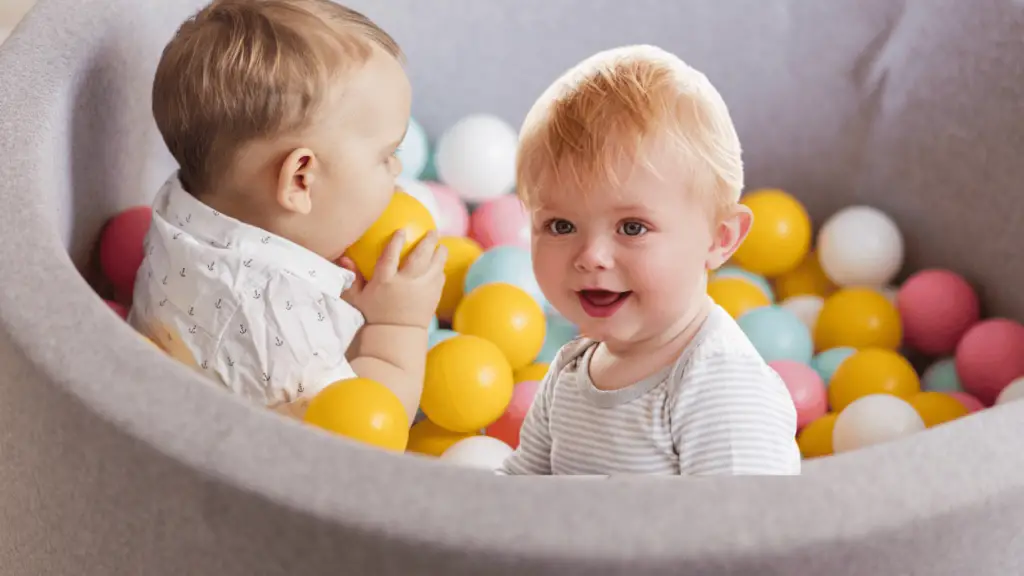Food Fling Frustration: Tackling Toddler Food Throwing with Patience and Practical Tips
Stop it! Stop it!, Ahh! Not Again, Mummy’s worst nightmare begins at mealtime when a toddler starts throwing his food. This is normal and might happen during every child’s developmental milestones. Of course, it’s not a good habit and must be stopped. But throwing things is part of their skill development. Changing this kind of behavior may take some practice.

Learn your child’s behavior and note the duration when he or she starts throwing the food.
5 Reasons Your Toddler Throws His Food
1. They want to play
Toddlers are usually in a playful mood. So playing with food is normal for them. When they are introduced to different colors and shapes of food, they simply enjoy having fun with it.
2. Their Tummies Are Full
Sometimes this habit occurs when their tummies get full and there is no more desire to eat. Because it takes some time for babies to digest their previous food.
3. When They Are Bored With The Meal
Serving the same food or less colored, bland foods, make your kid finish early, and then they start playing with it. Some kids are so picky about eating and only want to have their favorite food, so they get bored with the unfavorable food and start to throw it.
4. Attention Seekers
Some toddlers always want to seek their parents’ attention. They throw things to get sympathy and love.
5. Feeding Pets
Your toddler is helping out by feeding your pets. They are eager to show off their sharing and helping skills. By letting her help feed the pets, she’s learning how to be responsible and take care of others.
5 Simple and Easy Steps To Let Them Stop Throwing Food
1. Reduce Serving Size
Try to serve food in small portions, one by one. It will make them eager to eat more food and prevent them from wasting it.
2. Keeping them busy
Place forks, spoons, and napkins with the food to engage them while eating. Trying to pick up the food with a spoon or fork will keep them busy. With this practice, they will also be able to learn table manners.
3. Control Your Anger
Try not to show frustration and shout such words as “Stop it” and Don’t throw it. Adopt a calmer approach and try saying words such as “Can you please try to keep the food on your plate” or “See how Mummy and your sibling are eating their food.”
4. Keep Your Pet Out
Keep your pet out of the dining area while your toddler is having his or her food. Don’t throw food at pets in front of your kids. Try to put your pets’ food in bowls.
5. Reduce Eating Time
Note the time when your child is done eating their food and starts playing with it. Teach them a sign they can show you when they’re full. This way, you’ll know when to stop feeding your baby or if they’re just not hungry.
How I Stopped My Toddler, Shanzae, from Throwing Food in 5 Simple Steps (Learn from My Experience)
Hi, I’m Zainab, and I want to share my experience on how I managed to stop my adorable 2-year-old daughter, Shanzae, from throwing food. We’ve all been there—food flying across the room, the messy aftermath, and the frustration that comes with it. But with patience and a few simple strategies, I was able to teach Shanzae not to toss her food around.
Step 1: Setting Clear Expectations
The first thing I did was set clear expectations. Toddlers may not fully understand the consequences of their actions, so I made sure to explain to Shanzae that we eat food, not play with it. I used simple language that she could grasp, like, “Food is for our tummies, not for flying.”
Step 2: Positive Reinforcement
Instead of scolding Shanzae when she started to throw her food, I tried positive reinforcement. When she ate without throwing, I would cheer her on, clapping my hands and saying things like, “Great job, Shanzae! You’re such a big girl when you eat nicely.” Toddlers love praise and attention, and this encouraged her to behave better.
Step 3: Stay Calm and Consistent
It’s easy to get frustrated when your toddler repeatedly throws food, but I learned that staying calm and consistent is key. If Shanzae did start tossing her food, I’d calmly tell her, “We don’t throw food, sweetheart.” Then I’d gently take the food away and redirect her attention to eating.
Step 4: Use Diversion Tactics
Toddlers have short attention spans, so I found that diversion tactics worked well. If Shanzae seemed tempted to throw her food, I’d engage her in a conversation about her favorite toys or ask her questions about something she found interesting. This not only kept her distracted but also reinforced the idea that mealtime was for eating.
Step 5: Make Mealtime Enjoyable
I wanted mealtime to be a positive experience for Shanzae, so I made an effort to create a pleasant atmosphere. We’d use colorful plates and utensils, and I’d sometimes play soft music or tell her a fun story during meals. Making mealtime enjoyable reduced her desire to turn it into a food-throwing game.
Remember, teaching a toddler takes time and patience. Shanzae didn’t stop throwing food overnight, but with consistent efforts and these simple strategies, she gradually learned to eat without making a mess. The key is to remain loving and understanding throughout the process. Mealtime can be a wonderful bonding experience, and I’m grateful that I was able to help Shanzae develop good eating habits while keeping the joy in our shared moments.
Conclusion: How to Stop Toddlers from Throwing Food
Whatever step you are using to stop toddlers from throwing food, always remember that they are in the learning phase. They will eventually learn how to sit and behave during mealtime as they grow up, but instead of being frustrated or ignorant of your child’s eating behaviors, try a more favorable approach.


